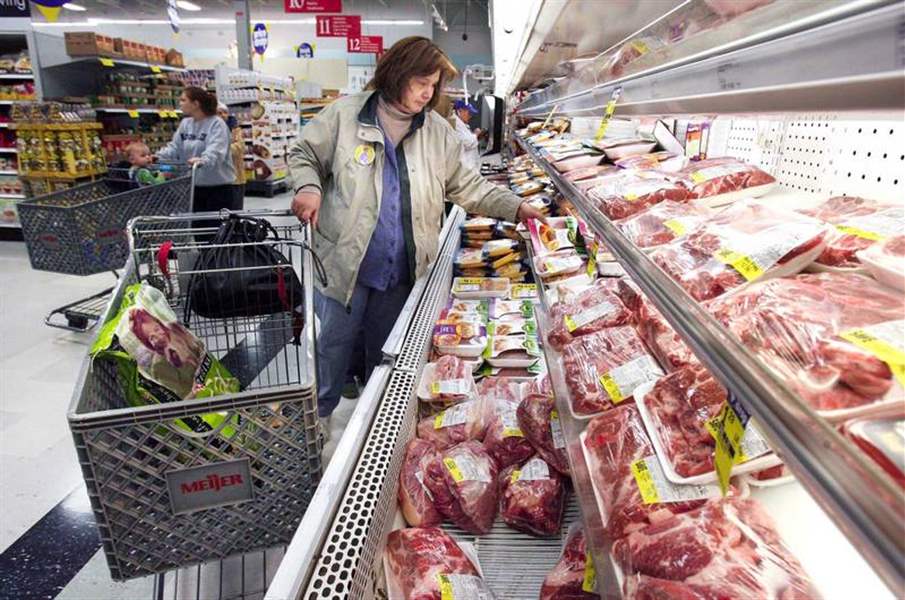
Wal-Mart takes bigger bite out of Kroger's local market share
2/23/2007
Tracey Doughten of Oregon shops in the meat department at Meijer in Oregon. Analysts say Meijer, Kroger, and other grocers are losing market share to Wal-Mart s grocery sales.

Tracey Doughten of Oregon shops in the meat department at Meijer in Oregon. Analysts say Meijer, Kroger, and other grocers are losing market share to Wal-Mart s grocery sales.
Kroger stores still grab the biggest share of the Toledo-area grocery dollars spent, but their grip has been noticeably eroded in the past year by Wal-Mart.
Kroger has a 45 percent share, down from 54 percent a year ago, while Wal-Mart has jumped to 14 percent from 2 percent a year ago, according to an industry consultant ACNielsen Trade Dimensions, of Wilton, Conn.
Most of the other local groceries kept similar market shares, the latest figures show.
"It looks to me like it's been a trade-off between Kroger and Wal-Mart," said grocery industry analyst David J. Livingston, of DJL Research in Milwaukee.
"It really depends on how you're doing the market share, how you calculate it. But Wal-Mart most likely also took market share from Meijer, Giant Eagle, and others."
Wal-Mart in the last year opened a grocery-laden store in the metro Toledo counties and is converting four other stores to carry a full-line of groceries.

However, Kroger isn't conceding anything.
It still has twice the market share of the No. 2 grocery, Meijer, which is at about 19 percent, similar to a year ago, Trade Dimensions said.
Kroger spokesman Dale Hollandsworth said the Cincinnati grocery chain looks at its market share and sales growth, and is happy with its Toledo area results.
"We know there's been a tremendous influx of new competition," he said.
"But it's an ongoing process. We have invested significantly in Toledo in the last three years and Toledo has been good to us, which is why we feel good about the Toledo market."
Kroger isn't standing pat either.
It has begun adding new services to its area stores to hold off competitors.
Recently, its stores began offering financial services, such as mortgages, pet insurance, and identity-theft insurance.
Next month, Mr. Hollandsworth said, its stores on Laskey Road in Toledo and in Perrysburg will begin selling E85 ethanol fuel for cars.
Three other area Kroger gas stations also will carry the fuel this year.
Wal-Mart, the biggest in America, performed similarly in both Columbus and Indianapolis, said Mr. Livingston, the analyst.
"The interesting thing is you've got similar competition in Toledo that they have in the Columbus market - Kroger, Wal-Mart, Giant Eagle, and Meijer," he explained.
"Wal-Mart had great success in that market and I would expect they would have similar success in the Toledo market."
Kroger has long had the dominant share of the Toledo grocery scene, but it catapulted to more than 50 percent after the departure of Food Town and Farmer Jack chains in the market in the past three years.
But Meijer, too, has lost grocery share in recent years.
In 2003, it was at 21 percent, according to the Trade Dimensions study.
Some stores that sell grocery items but are not considered full-line supermarkets, such as Target, are not included in the figures in the study.
Contact Jon Chavez at:
jchavez@theblade.com
or 419-724-6128.